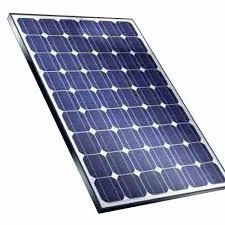Exploring the Impact of 30% Reduction in Solar Panel Costs on Renewable Energy Adoption
Understanding the 30% Reduction in Solar Panel Costs
In recent years, the global shift towards renewable energy sources has gained traction, with solar energy shining brightly as a frontrunner in this revolution. One of the most striking developments in the solar industry has been the dramatic decrease in solar panel costs. Reports indicate that, on average, solar panel prices have dropped by approximately 30% over the past few years. This significant decline in costs not only makes solar energy more accessible to consumers but also has far-reaching implications for the economy, environment, and energy policy.
The Economics of Solar Energy
The reduction in solar panel costs can be attributed to several factors. First and foremost, advancements in technology have played a crucial role. Manufacturers have made great strides in enhancing the efficiency and durability of solar panels, using more advanced materials and methods. Innovations such as bifacial panels, which can capture sunlight from both sides, and thin-film technology have allowed for more effective energy collection and reduced production costs.
Furthermore, the scaling up of production has driven prices down. As demand for solar energy has surged, large-scale manufacturers have increased production capacity, enabling them to benefit from economies of scale. This has resulted in lower per-unit costs, which are often passed on to consumers.
Government incentives and subsidies have also contributed significantly to the reduction in solar panel prices. Many countries have implemented policies that support the adoption of solar energy, such as tax credits, feed-in tariffs, and grants for renewable energy projects. In the United States, for instance, the federal solar tax credit allows homeowners to deduct a substantial percentage of their solar installation costs from their federal taxes. Such incentives make it financially appealing for homeowners and businesses to invest in solar energy solutions.
Environmental Impact
The decrease in solar panel costs is not solely an economic matter; it carries substantial environmental benefits. Solar energy is a clean, renewable resource that can drastically reduce greenhouse gas emissions compared to fossil fuels. As solar panels become more affordable, more individuals and organizations are likely to invest in renewable energy systems. This increase in solar adoption can lead to a significant reduction in carbon footprints across various sectors, aiding in the fight against climate change.
30 solar panels cost

Moreover, the transition to solar energy helps decrease reliance on non-renewable resources, fostering a more sustainable energy system. This transition not only benefits the environment but also promotes energy independence, reducing geopolitical tensions associated with fossil fuel dependence.
Community and Societal Benefits
The 30% drop in solar panel costs has also enhanced the potential for job creation and economic growth in the renewable energy sector. As more solar installations emerge, there is an increasing demand for skilled labor in areas such as manufacturing, installation, and maintenance of solar energy systems. The growth of this sector provides significant employment opportunities, contributing to local economies.
Furthermore, the accessibility of solar energy can play a vital role in energy equity. As costs decline, solar solutions can become available to low- and middle-income families who may have previously been unable to afford such technologies. Accessible solar energy can empower communities, reduce energy bills, and ensure a more equitable distribution of energy resources.
The Future of Solar Energy
Looking ahead, the future of solar energy appears bright. Continued advancements in technology and manufacturing processes are likely to further drive down costs, making solar energy even more accessible. Additionally, as the global community intensifies its focus on combating climate change, the demand for renewable energy solutions will continue to rise, creating a positive feedback loop of innovation and affordability.
In conclusion, the 30% reduction in solar panel costs represents a pivotal moment in the renewable energy landscape. This decline not only makes solar energy more viable for consumers but also spurs economic growth, fosters environmental sustainability, and promotes energy equity. As we embrace this brighter, cleaner future, the solar industry stands as a beacon of hope for a sustainable world.
-
String Solar Inverter: The High-Efficiency Solution for Smart Solar EnergyNewsJul.14,2025
-
Revolutionizing Rooftop Energy with the Power of the Micro Solar InverterNewsJul.14,2025
-
Power Independence with Smart Off Grid Solar Inverter SolutionsNewsJul.14,2025
-
On Grid Solar Inverter: Powering the Future with Smart Grid IntegrationNewsJul.14,2025
-
Monocrystalline Solar Panels: High-Efficiency Power for the Future of Clean EnergyNewsJul.14,2025
-
Bifacial Solar Panel: A Smarter Investment for Next-Generation Energy SystemsNewsJul.14,2025







